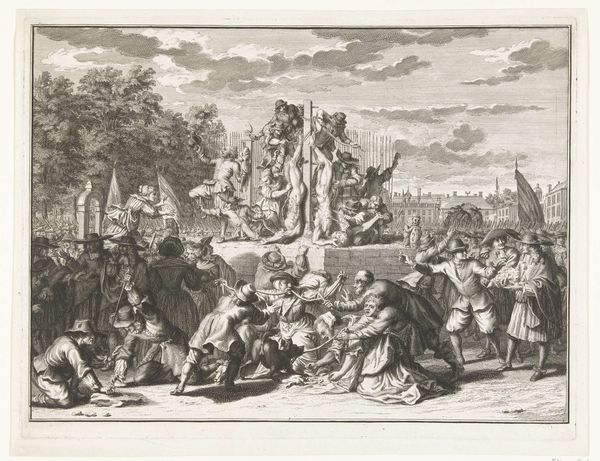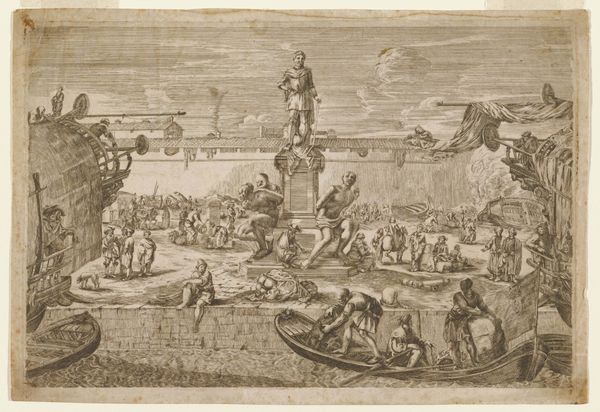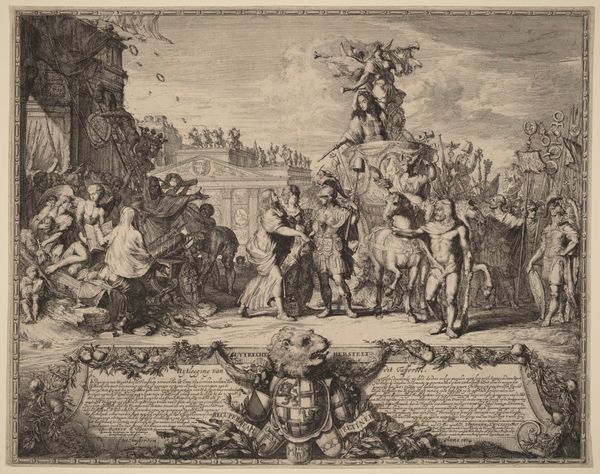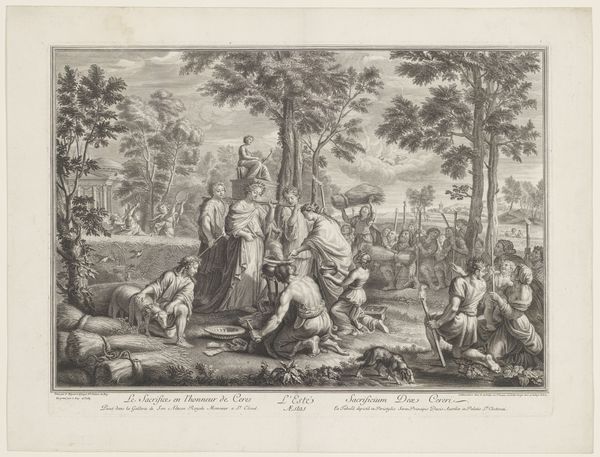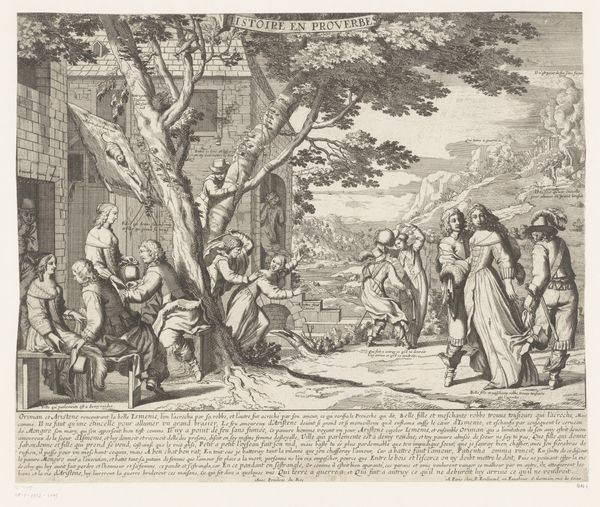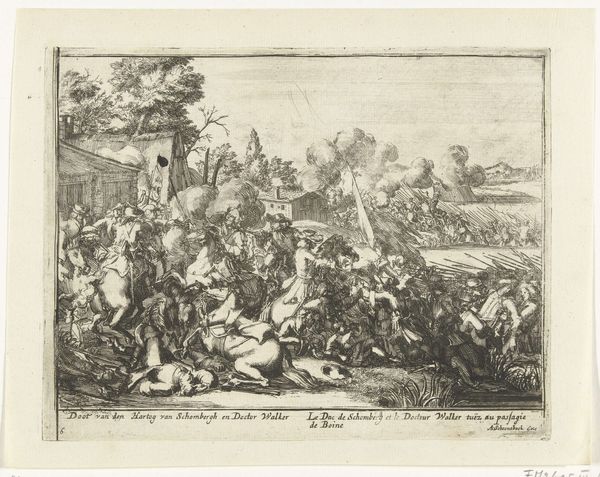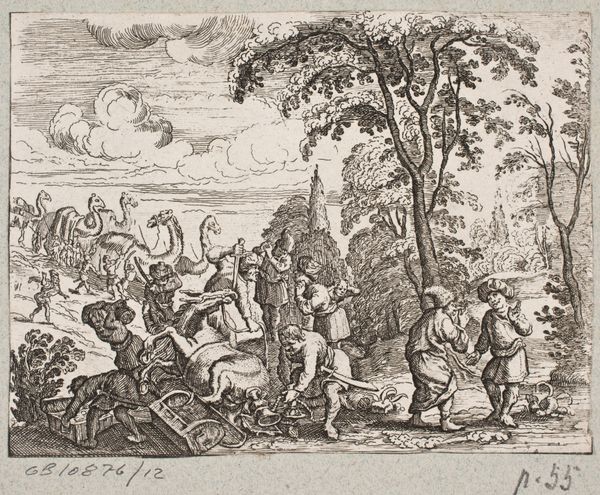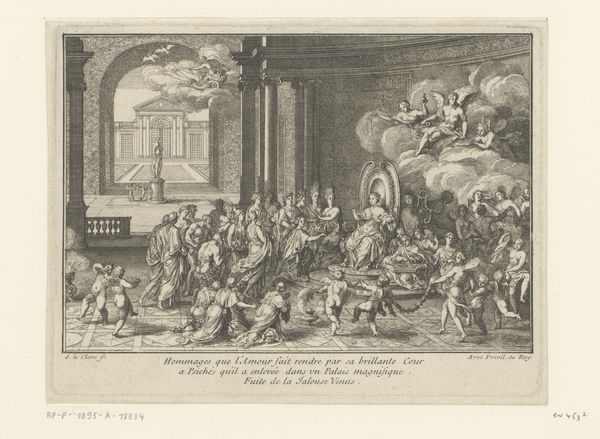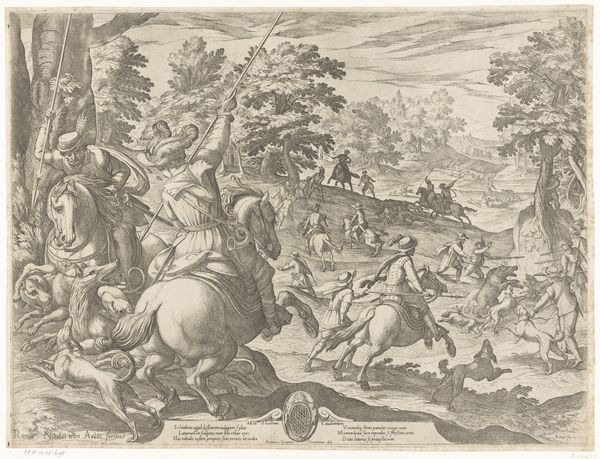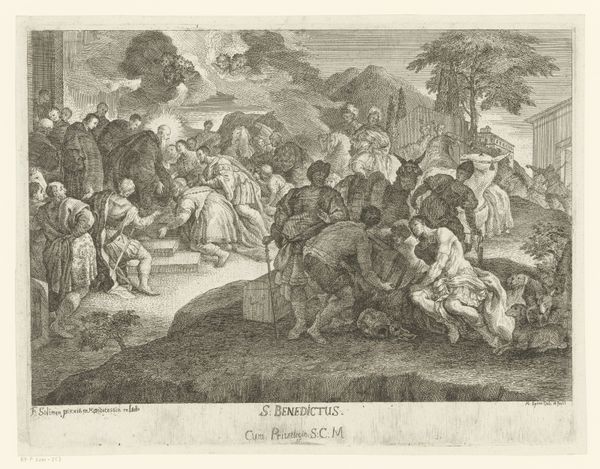
print, etching, engraving
#
narrative-art
#
baroque
# print
#
pen illustration
#
pen sketch
#
etching
#
figuration
#
cityscape
#
history-painting
#
engraving
Dimensions: height 270 mm, width 354 mm
Copyright: Rijks Museum: Open Domain
This is Bernard Picart’s etching, made after the events of 1672, titled “Verminking van de lichamen van de gebroeders de Witt,” or, the mutilation of the bodies of the brothers de Witt. It illustrates a dark chapter in Dutch history. Johan de Witt, the Grand Pensionary of Holland, and his brother Cornelis were lynched by a mob in The Hague. Picart, born shortly after the event, recreates the gruesome scene. He portrays the brothers' naked corpses hanging upside down, surrounded by a frenzied crowd. The etching is a stark reminder of the fragility of political power and the dangers of mob violence. It also reflects the intense political divisions within Dutch society at the time. The de Witt brothers were proponents of a republican government, and their murder marked a victory for the Orangist faction, which supported the monarchy. Beyond the political narrative, the image evokes a visceral emotional response. The graphic depiction of violence serves as a cautionary tale about the consequences of political polarization and the dehumanization of one’s opponents.
Comments
No comments
Be the first to comment and join the conversation on the ultimate creative platform.
